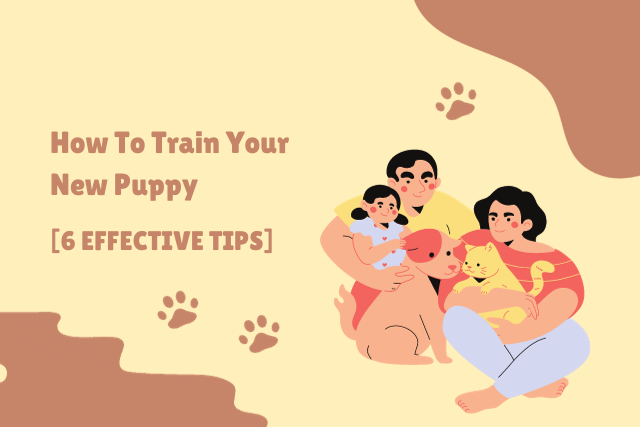
So, you’ve got a new puppy. You’ve done your research and adopted the cutest puppy.
Now that you’ve gotten it home, you’ve realized that having a puppy is a ton of work. Potty training and house training can be a bit overwhelming. Don’t worry.
We are going to walk you through the must-knows to train your new pup. We are going to cover potty training and house training.
They may seem like they’re the same thing, but they’re different.
1. Why You Decided to Adopt
There are many benefits of owning a pet. They’re fun to play with and snuggle up with. Remember the reasons why you chose to adopt a dog when you get frustrated during training.
2. Potty Training
First, potty training is exactly as it sounds. You are going to train your pup where to go to the bathroom.
This is tricky. It is all about routine and reward. Many people find it best to keep the puppy in a crate during the night. Dogs do not want to use the bathroom where they sleep.
Puppies have small bladders so it is best to take them out at least once in the middle of the night. You don’t want them to start a habit of going in their crate.
You will need to start a routine of bathroom visits every 30 minutes. As your puppy grows, you can move it to every hour.
Remember, in the beginning, your puppy will have accidents. Never punish a dog for accidents.
Reward your pup for its success. If it potties outside, give it a treat or play fetch. Your puppy will start to realize that using the potty outside is a good thing.
3. House Training
House training is less about the potty and more about how to live in your home. This includes where to sleep and what to play with.
Always leave their bed in the same spot, so that they learn where to sleep at night. Moving it around can be confusing.
If there are areas in the home that you don’t want the puppy to go to, it’s best to put up a gate so that they learn that they don’t go there.
Dogs can damage or dirty furniture. If you don’t want your puppy on the furniture gently move it down to the floor every time it gets on the furniture.
Only play with or snuggle your dog in places where it is allowed, not to confuse it. You don’t want it to cuddle it on the couch one day then the next to tell it not to be on the furniture.
4. Let It Chew
Puppies need to chew. You are probably learning that your puppy is chewing on everything. Chewing is great for your puppy. It needs to be chewed. You need to direct the puppy where it is allowed to chew.
Give your puppy an indestructible dog toy. If it starts chewing on shoes or furniture, move the puppy and give it its toy. It will soon learn that the toy is the only thing it should chew on.
5. Reward, Reward, Reward
Giving your puppy positive alternatives, like chew toys will allow you to practice positive reinforcement, making you and your new dog happier in the long run.
Reward with treats and affection. Every time your dog does something good, give it a reward. Positive reinforcement is the only way to train a dog. Never yell or punish.
6. Keep Calm During Frustration
If you get overwhelmed and just can’t seem to get your pet to listen, don’t be afraid to seek help from a professional dog trainer. Visiting a group training class is less expensive but will also help you to better understand how to train your dog.
Remember, it will take time. There will be accidents. It is ok. It doesn’t necessarily mean you are doing anything wrong. Just like a child, some things will come with growth.
For instance, as your puppy grows, it will be able to hold it longer. A puppy a few weeks old just doesn’t have the ability.
Having a dog can be such a rewarding experience, however, having a young puppy can be frustrating.
Just remember, it will be worth the frustration. With repetition, your puppy will be trained and will become a great member of the family.
About The Author:
Bryce Newell is an automotive enthusiast, former RN, and an aspiring writer who covers health, automotive, and small business topics. You can find his latest thoughts at autonews.center and contributions across many small businesses, automotive, and health sites.


![[Infographic] Effective Tips for Tightening Loose Skin and Improving Elasticity Tightening Loose Skin](https://www.safeandhealthylife.com/wp-content/uploads/2023/10/Tightening-Loose-Skin-150x150.webp)

